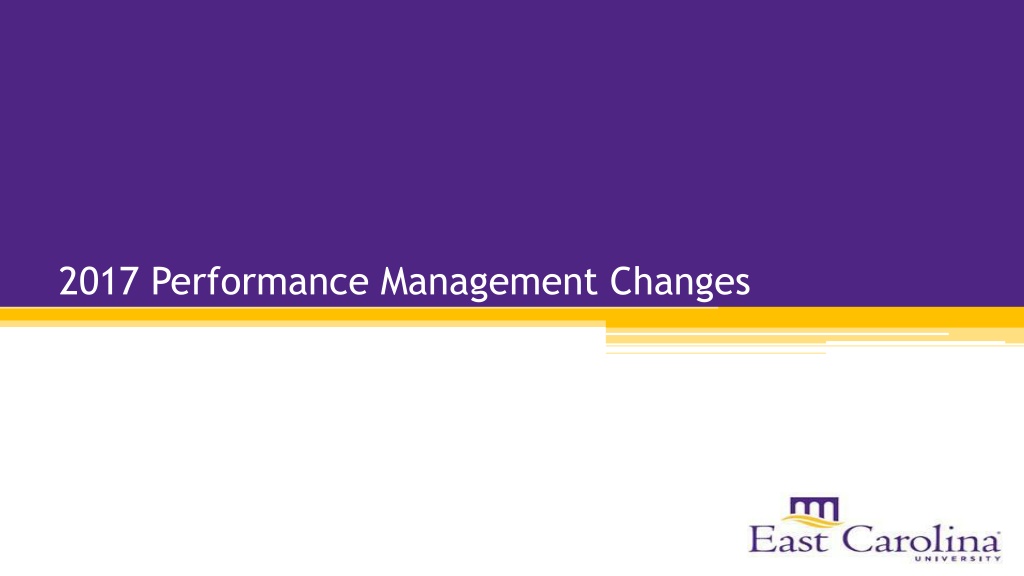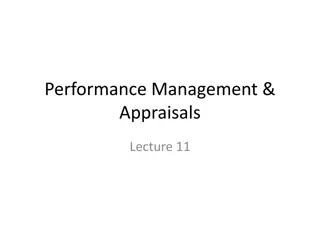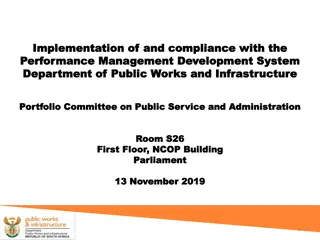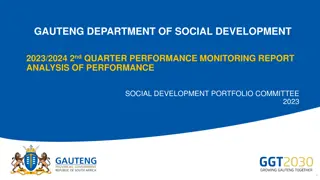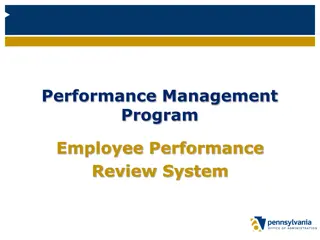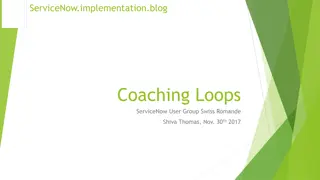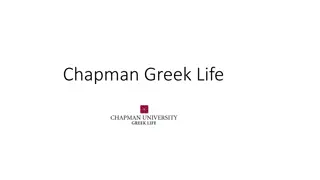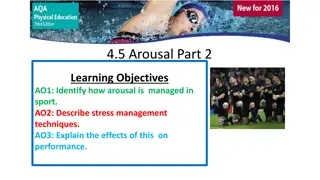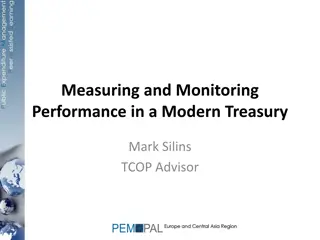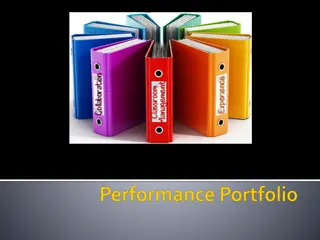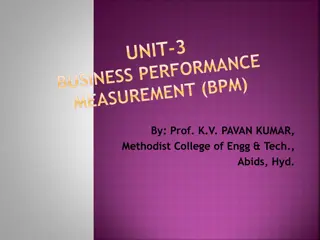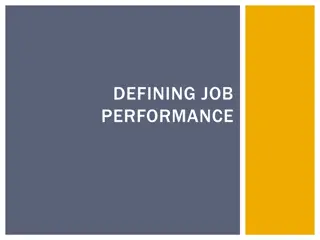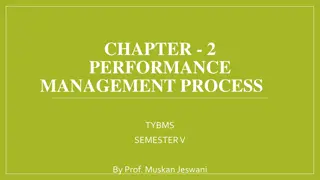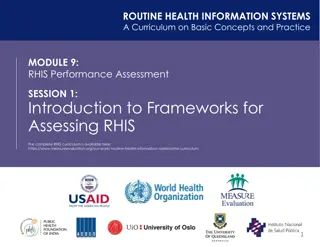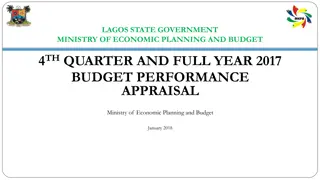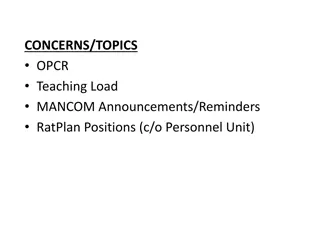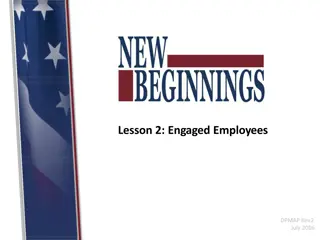Enhancing Performance Management in 2017: A Comprehensive Overview
In 2017, significant changes were introduced to the performance management program, focusing on aligning core work values with institutional goals, creating standardization for evaluations, and improving rating accuracy. The evaluation program timelines, structure, and types were revamped to enhance effectiveness and consistency. The goal was to promote clear communication, align individual goals with business needs, and ensure quality control throughout the performance cycle.
Download Presentation

Please find below an Image/Link to download the presentation.
The content on the website is provided AS IS for your information and personal use only. It may not be sold, licensed, or shared on other websites without obtaining consent from the author. Download presentation by click this link. If you encounter any issues during the download, it is possible that the publisher has removed the file from their server.
E N D
Presentation Transcript
Major Changes Overview Core Work Values Institutional Goals (with calibration) Job Duties Individual Goals (with calibration) Five-Point Scale Three-Point Scale (with calibration)
Program Goals Create standardization for evaluations Define satisfactory level of work at meeting expectations for business needs Tie institutional goals to mission and vision of the University. Increase accuracy and defensibility of ratings Address both behavior and conduct Ensure position/performance management consistency Ensure ease of quality control and data analysis Promote open and clear communication
Evaluation Program Current & Future Current Future Timelines (through March 31, 2017) (Beginning April 1, 2017) Performance Cycle April 1 March 31 No change Performance Planning (Goal Setting & Calibration) March - April March April (with Calibration) Post-Evaluation Rating Calibration N/A March April Evaluations Completed April - May No Change
Evaluation Program Current & Future Evaluation Structure Current Future (through March 31, 2017) (Beginning April 1, 2017) Core Work Values 5 Institutional Goals One additional for supervisors Weighted 50% 3-5 Individual Goals Set by supervisors Weighted 50% Talent Development Goal Job Duties Professional Development
Evaluation Program Current and Future Types of Evaluations Current Future (through March 31, 2017) (beginning April 1, 2017) Probationary Due at 3 months Due Quarterly (January, April, July, October) Required if employee has Disciplinary Action, is Not Meeting Expectations, if supervisor wants to, or if Chancellor/designee requires Interim Due October - November Transfer Due at time of Transfer Due at time of Transfer or if supervisor leaves Employee Requested Evaluations Management Driven N/A Employees can request one off-cycle evaluation per performance cycle granted 60 days has passed since last evaluation Supervisors can conduct as often as they find necessary. N/A
Evaluation Program Current & Future Current Future (through March 31, 2017) Five-Point System Outstanding Exceeds Expectations Meets Expectations Below Expectations Unsatisfactory Final Ratings based on overall evaluation Supervisors comment on each individual Core Work Value and Overall Performance Employees can include written comments (beginning April 1, 2017) Three-Point System Exceeds Expectations Meets Expectations Below Expectations Rating Final ratings based on weighting and final outcome One overall comments section Comments No change
Evaluation Program Calibration Sessions Supervisory teams meet at beginning of cycle to set performance goals Supervisory teams meet at end of cycle to ensure consistency in performance ratings Required for Employees in Similar Positions Best practice for other positions
Evaluation Program Facilitator Supervisory Team Employees
Institutional Goals CUSTOMER- ORIENTED Clarity Awareness Attentiveness Diplomacy EXPERTISE Precision Resourcing Innovation Development COMPLIANCE/ETHICS Policy Safety Ethics Respect ACCOUNTABILITY Productivity Autonomy Prioritization Coordination TEAM-ORIENTED Collegiality Collaboration Contribution Attendance SUPERVISION Oversight Goal-Setting Managing Talent Leading
Individual Goals Working with employee, supervisor defines 3-5 individual goals for each employee each cycle. Not intended to cover all aspects of employee work product (institutional goals do that). Focus is on key results/outcomes/deliverables, not steps in the process.
Smart-er Goals S - Specific M - Measurable A - Achievable R - Relevant T - Time-bound E - Expectations R - Resources
Individual Goals Do this .Present the new Performance Management plan to all SHRA supervisors before January 30, 2017 in order to . provide sufficient guidance to supervisors on new program so that . they will be ready to develop performance plans in 2017.
Structure of Individual Goals Goal: Present the new PM plan to all SHRA supervisors before January 30, 2016 in order to provide sufficient guidance to supervisors on new program so that they will be ready to develop performance plans in 2017. Specific Deliverables: 1. Develop a PowerPoint presentation to be used by all involved. 2. Determine what handout materials are needed. Exceeding Expectations: Not only present new PM plan to all supervisors face-to-face but develop online Cornerstone training based off of face-to-face presentation material as well.
Talent Development Recommended (not required) that each employee have at least ONE Talent Development Goal per cycle. Supervisor and employee work to determine appropriate goals Supervisor expected to address deficiencies of any employee who received any rating of Not Meeting Expectations.
Talent Development Some examples could include securing funding for a certification program, attending seminars provided by the University, etc.
Weighting and Rating For Institutional Goals, the total for all must equal 50% 10% 10% 10% 10% 10% 10% 10% 10% 10% 10% 0.20 0.20 0.10 0.10 0.20 0.20 2 2 1 1 2 2 3 3 0.30 0.30 0.20 0.20 2 2 Remember: Supervision is only applicable if the employee is a supervisor.
Weighting and Rating The total for all Individual Goals must equal 50% 3-5 Individual Goals are required. We recommend 3 for the first cycle on the new PM program. 15% 15% 0.30 0.30 2 2 2 2 1 1 15% 15% 0.30 0.30 10% 10% 10% 10% 0.10 0.10 0.30 0.30 3 3
Weighting and Rate Note: Weights (as well as goals) can be changed during the Performance Cycle. However, this would only be due to significant extenuating circumstances.
Weighting and Rating Scoring Rate each Individual and Institutional Goal Add all of the Scores together to assign a Final Overall Rating 1.00 1.69 = Not Meeting Expectations 1.70 - 2.69 = Meeting Expectations 2.70 - 3.00 = Exceeding Expectations 1 = Not Meeting Expectations 2 = Meeting Expectations 3 = Exceeding Expectations Multiply the Weight by the Rating to get the Score for each goal. Use two decimal places. (Example: 10% x 2 = .20)
Weighting and Rating Add all of the scores from Institutional Goals and Individual Goals to calculate Total Score.
Calibration Overview Discussions to set performance expectations and ratings fairly and consistently among similar positions. Sessions held among peer supervisors in a supervisory team (all supervisors reporting to same manager) Typically facilitated by the manager of the supervisory team
Calibration Overview Value of Calibration Helps supervisors set and apply similar standards Helps identify and correct potential biases or errors Encourages supervisors to think through expectations and ratings before giving them to employees Ensures consistency among departmental units
Calibration Timeline Both performance plans and annual appraisals need to be completed in the months of April and May Typically supervisory teams should be meeting in mid-to-late April to hold calibration discussions for both the Annual Appraisal and the upcoming year s Performance Plan. These meetings are held before the supervisor can review the Annual Appraisal or the Performance Plan with the evaluated employee.
Questions? Justin Yeaman Christy Carraway Sara Lilley Jeff Buck Learning and Organizational Development 252-328-9848 HRDevelopment@ecu.edu Employee Relations 252-328-9848 Employeerelations@ecu.edu
